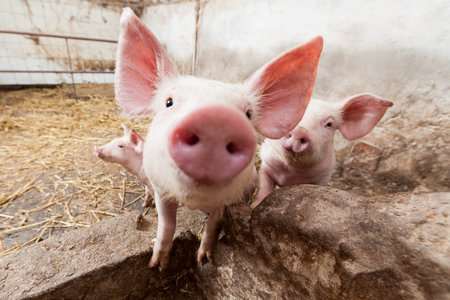
Animal factors
Animal factors affecting PWM can include both the sow and the piglet.
In terms of the piglet, both birth weight and robustness are important, says Magrath.
Robustness is achieved through genetics, nutrition and the strength of the piglet’s immune system, she explained. Producers should ensure piglets get colostrum as quickly as possible to encourage the transfer of high levels of antibodies.
The sow also plays a key role in PWM, according to Magrath. Producers should provide their sows with the proper vitamins and minerals – these nutrients will promote high quality colostrum.
Magrath suggested producers often overlook the importance of keeping detailed records on each sow. Farmers can use these records to have a clearer sense of individual sow productivity and to visually track sows’ temperatures (to monitor for health concerns).
Environmental factors
Producers should remember a variety of factors when managing a piglet and sow’s environment. One of the largest factors is environment temperature, due to piglets’ lack of thermoregulation abilities, according to Magrath.
When caring for piglets, having an adequate “heat source is paramount,” she said. "Heat lamps should be set at a height that allows the pigs to get into the light and still produce (heat at) 95 (degrees) at the floor."
A lack of proper heating can cause the piglets to keep close to the sow’s udder, which can put piglets at risk of crushing and can also disrupt proper feed intake in both piglets and sows.
Proper sanitation is also key when addressing PMW. Producers should practice an “all-in-all-out” system to eliminate the possibility of pathogens traveling from one swine group to the next and to ensure the barn gets properly cleaned.
Farmers can reduce PMW by washing sows before they farrow, Magrath said.
Recent literature suggests human handing may increase piglet stress and therefore affect PMW rates. This factor should only be considered on a case-by-case basis, according to Magrath.
Human factors
Finally, humans also affect PMW in piglets. Magrath highlighted the benefits of having well-educated staff to assist in all aspects of farrowing.
Staff should be dedicated to assisting piglets and sows on farrowing days, said Magrath. Staff may need to enact "split suckling of large litters (to) enable adequate colostrum intake.” Or, staff may need to “take away the largest or smallest pigs” (through fostering) to ensure the full litter is getting proper amounts of colostrum.
Importance of review
Due to the broad range of factors that may be contribute to an operation’s PWM rates, producers may benefit from reviewing all potential challenges, according to Magrath.
Farmers should consider writing – and regularly reviewing – SOPs (standard operating procedures) for all of the pig production stages. SOPs create accountability among staff. If regular reviewing these documents, staff can consider revisions to, and updates of, procedures.
LSC runs Mar. 28 and 29.